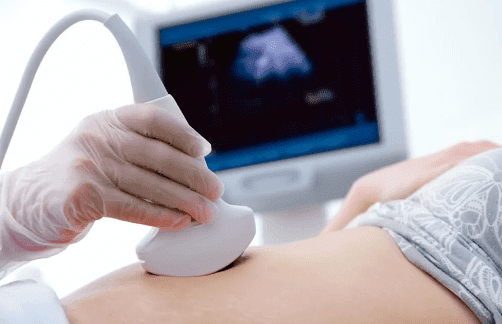Have you ever heard of a blighted ovum during pregnancy? You might have, as many people confuse it with a molar pregnancy. In reality, they are two different conditions. A blighted ovum typically occurs in the first trimester of pregnancy due to a fertilization process between a sperm cell and an egg cell.
Despite fertilization occurring, the embryo inside the uterus fails to develop or doesn’t form at all. Several factors can cause a blighted ovum, such as poor sperm or egg cell quality, genetic factors from either the husband or wife, and the body rejecting abnormal chromosomes.
In the early stages of a blighted ovum, you may experience pregnancy symptoms similar to a typical pregnancy. So, what are these signs? Here’s a brief explanation of a few.
1. Missed Period
In the early stages of a blighted ovum, you will experience a common symptom of pregnancy—missed periods.
This is quite usual because, during a blighted ovum, fertilization has taken place, and you’ll feel like you’re truly pregnant. However, the fetus and embryo never develop within the womb.
2. Positive Urine Test
There are several ways to confirm pregnancy, one of which is measuring the Human Chorionic Gonadotropin (HCG) levels in a urine test. In the initial stages, sperm cells have already attached to the uterine wall, signifying your readiness to welcome a new family member.
Nevertheless, even if you have common pregnancy symptoms, these tests may not always provide accurate results because HCG levels in the blood and urine are elevated during this phase, leading to positive test results, even when no fetal development has occurred.
3. Bloating and Discomfort
Another sign of a blighted ovum is a bloated and uncomfortable feeling in the stomach. This abdominal bloating is evidence that the uterus is prepared to receive the embryo from the fertilization of the egg cell.
Many people mistakenly think that this is a definitive pregnancy sign because the formation of the gestational sac begins pressing on the urinary tract, causing symptoms like a decreased appetite and abdominal gas. These symptoms can even lead to reduced activity levels.
4. Breast Pain
Slightly different from typical pregnancy symptoms, a blighted ovum often results in severe breast tenderness and pain.
However, many pregnant women misunderstand this as fatigue from daily activities. The breast pain is primarily due to the reduced oxygen levels resulting from the failed embryo development after the sperm and egg cells merge.
5. Morning Sickness
For those experiencing a blighted ovum, you will likely have typical pregnancy symptoms, including morning sickness. Morning sickness is the feeling of nausea and a desire to vomit in the morning.
This symptom is attributed to increased progesterone levels in the body, which is a standard characteristic of pregnancy. However, in the case of a blighted ovum, the embryo does not develop or grow perfectly. During this phase, you may still feel excited about the arrival of a baby, making it difficult to recognize the blighted ovum’s signs.
6. Headaches
As explained earlier, HCG levels in the blood and urine increase during the early stages of pregnancy. This can lead to headaches and other signs of a blighted ovum.
Many people consider headaches as common symptoms of pregnancy since most expectant mothers experience them throughout the third trimester.
7. A Sense of Pregnancy
As a pregnant woman, you may have a strong instinct that there’s a baby growing in your womb. Moreover, if you experience other noticeable symptoms.
However, it is difficult to distinguish the signs of a blighted ovum, as there is no embryo development. This phase can make it challenging to determine whether a person is experiencing a blighted ovum or not.
8. Presence of a Gestational Sac
Even though you might have a blighted ovum, certain symptoms of pregnancy can still be felt. When visiting a doctor for an ultrasound, the presence of the gestational sac can be seen. The sac has formed even though there is no embryo development.
During this phase, it’s best to consult a doctor and have an ultrasound examination when the pregnancy is more than 7 months to confirm whether there is an embryo inside or not.
9. Lower Abdominal Cramps
Lower abdominal cramps start to appear as the pregnancy progresses into the third trimester. The reason behind these cramps is the thickening of the uterine wall as a sign that your body is ready to receive the embryo.
Signs of a blighted ovum in the third trimester may not be clear. Similar to other pregnant women, your partner’s sperm cells attach to the uterine wall, often causing abdominal discomfort and pain.
10. Severe Bleeding
This last sign of a blighted ovum occurs when you experience lower abdominal cramps accompanied by the presence of brown or black vaginal discharge. Women often find it challenging to pinpoint when bleeding might happen, mistakenly considering these signs as indications of menstruation.
Irregular menstruation is quite common for women, and many may not realize that these signs can indicate a blighted ovum. Profuse bleeding from the vagina can occur because the uterus has experienced a miscarriage. If you face this symptom, it’s essential to consult with a doctor for a more precise diagnosis and further guidance.
These are some signs of a blighted ovum that you should be cautious about. While they may evoke mixed feelings, it’s crucial to pay attention to these symptoms and regularly consult with a doctor. Neglecting them could lead to potential health risks for both the mother and the fetus.



